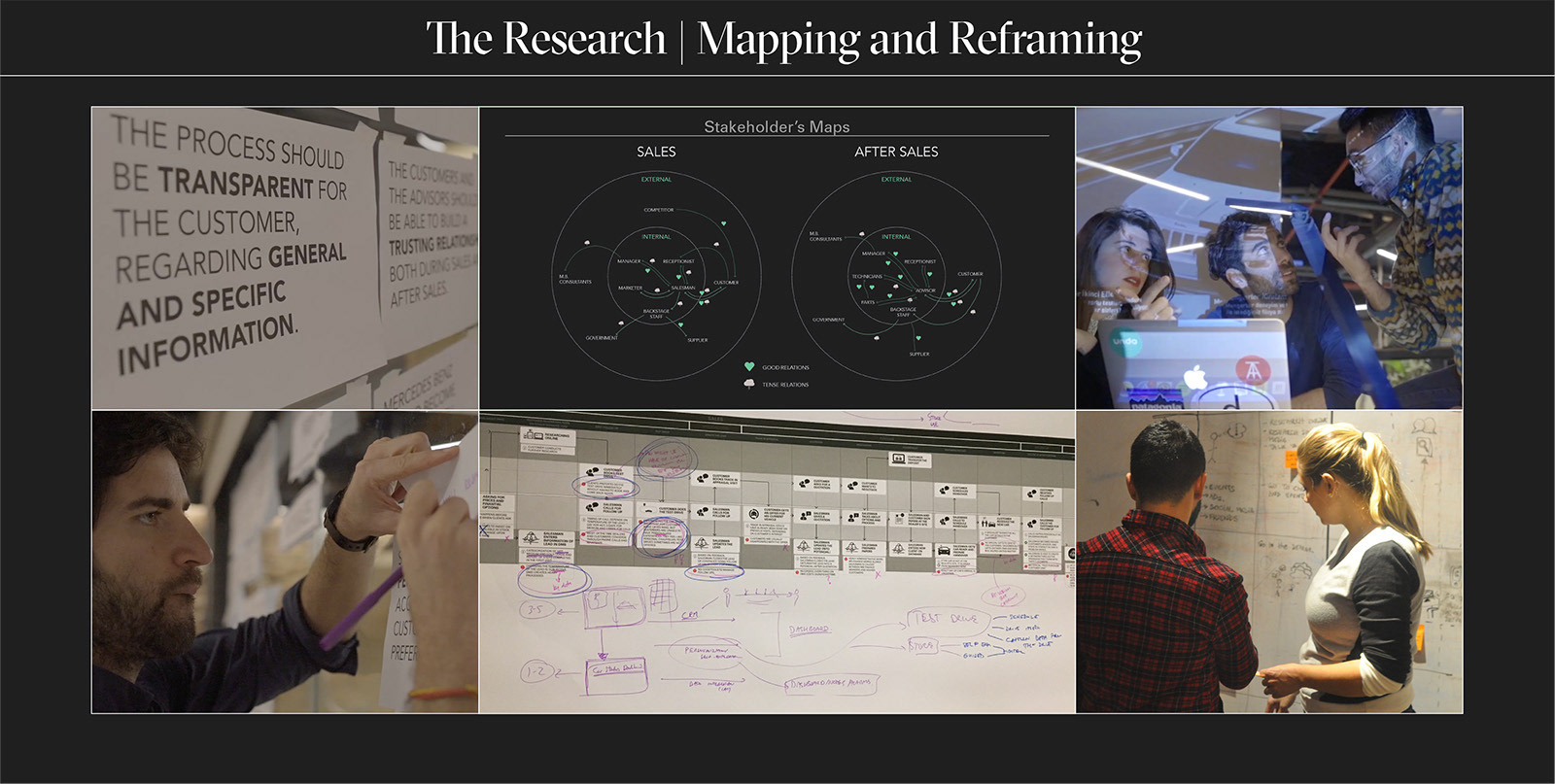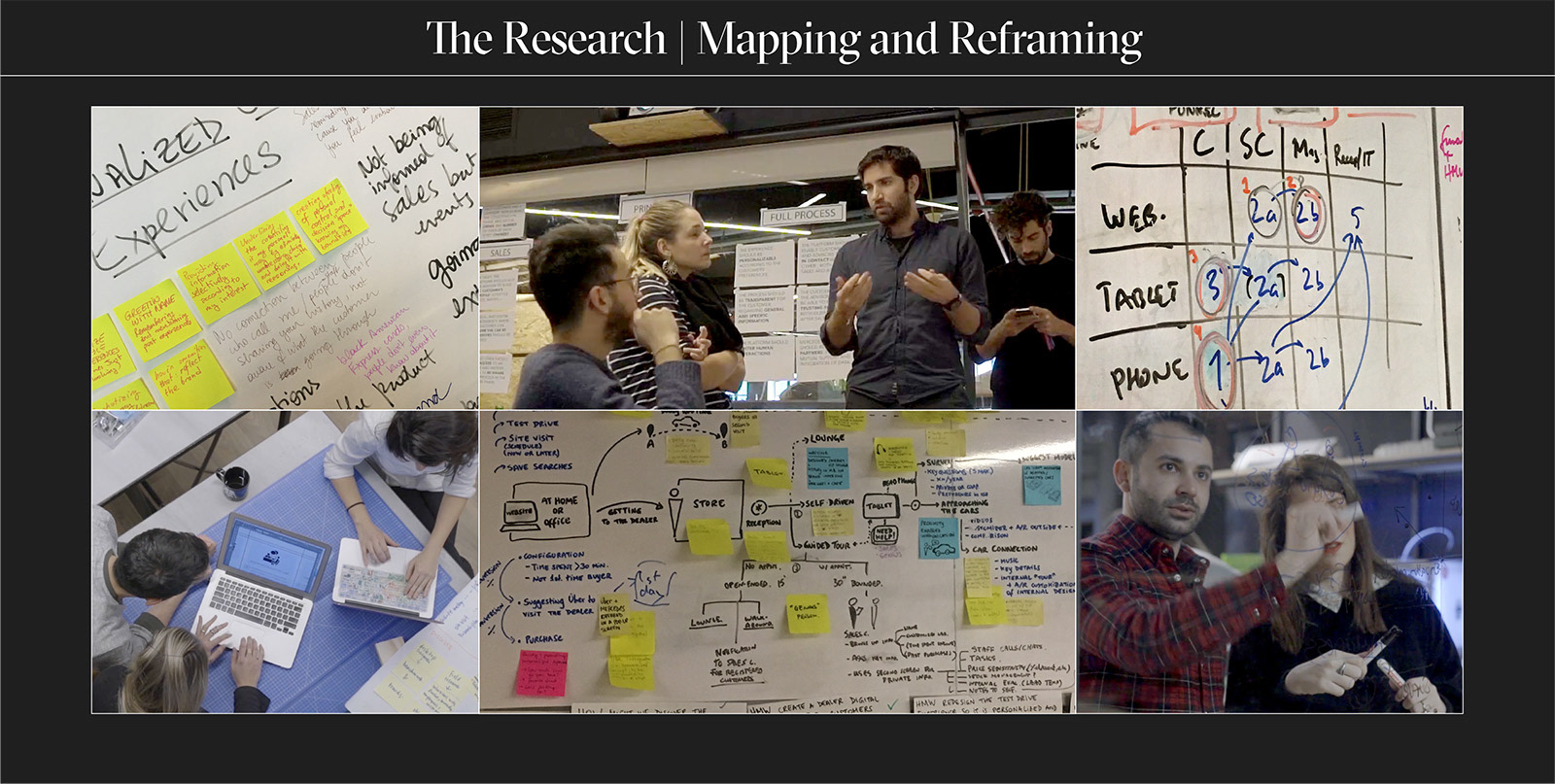How might we imagine a holistic sales and after sales experience for customers and dealers?
A collaborative product service system concept design to re-imagine the future of automotive retail for Mercedes-Benz. Starting with the Dealer Management System (DMS) – the system used by dealers to conduct their business – we expanded the scope using Design Thinking methodology to develop a portfolio of physical and digital solutions for both dealers and customers. With a multidisciplinary team over two months, we developed interventions for the complete user journey, from initial consideration to after sales services.
Company: ATOLYE
Role: Project Co-Lead, Research Team Lead
Scope: System Design, Learning Experiences, Community-as-a-Service, Multimedia
Year: 2014 - 2017
This project started with the mission to design the new generation of Dealer Management Systems (DMS) for the future of automotive retail. The current DMS options in the market focus only on repetitive and reporting tasks, not fully assisting dealers to achieve their sale goals, even on simple tasks such as managing follow up calls efficiently.
It was impossible to understand how the new DMS should be without deep diving into the ecosystem where it operates, understanding unmet needs of both dealers and customers. Our first insight was that a new system to manage an existing experience would not be enough, so the scope grew to reinvent the full retail experience of Mercedes Benz for all involved.


Over the course of two months, a diverse team of over 20 professionals from ATÖLYE collaborated with the Mercedes-Benz team and employed Design Thinking methodology to discover empathy-based user insights and reimagine the automotive retail experience across physical and digital domains. Beyond online benchmarking, the project team went into the field to conduct 57 interviews at 23 dealerships along with 62 existing and potential customers across seven different countries. .
Mapping the emotional states of each actor throughout the sales and after-sales processes via immersive research, we diagnosed the possible problematic moments, which may lead to frustration, stress or anger. This analysis helped us focus on key issues such as impersonal retail experiences or prescribed test drive routines.
From the study, we discovered that sales and aftersales processes are very different at their core. Sales is about personalization and about giving the customer the power to choose their own path. After sales, on the other hand, is about creating an efficient and highly connected process, promoting transparency and trust. These insights were then captured in the following design principles, which helped evaluate each idea against a consistent framework.


A diverse creative team with different professional backgrounds such as product, service, UX and UI designers, architects and animators worked on all the steps of the project, from research, to reframing, ideating and prototyping project. An ideation session with the ATÖLYE community was also conducted, with over 20 participants from different professional backgrounds, ages and nationalities.








122 ideas were developed, covering all steps of both sales and aftersales journeys, as well as considering options for all types of customers. From those, 35 ideas were selected to be portrayed in two animations showing possible journeys for the future of the Mercedes- Benz experience.
Via this vision of a fictional future, a novel purchase experience is articulated where the customer pilots their own journey, starting from a virtual tour, then scheduling a test drive that fits their routine and sharing their unique experience online, and ending with a special handover. Meanwhile, an intelligent retail management system helps dealers better understand customer expectations and offer tailored services and opportunities accordingly.
Via this vision of a fictional future, a more engaged, transparent and connected after sales experience is articulated using augmented reality and sensing technologies. The car system, the dealer’s system, and the Mercedes- Benz support channels are connected and integrated for the ultimate customer care experience, quickly reassuring the client, and scheduling the service needed. A fully synchronized system allows the client to receive the inspection results on their phone, solve their doubts, approve services and schedule pick up time, all through their app.
The 122 ideas generated were organized in a framework that covers all the steps in the sales and after sales processes (horizontally divided), and focuses on three different moments (vertically divided): when customers consider their options and make requests on their own time (top section), when customers and dealers interact at the dealership or outside (middle section), and when the dealerships employees are working on the DMS, both in specific customer cases, as well as managing their own tasks (bottom section). Besides the 35 ideas were showcased in the animations, the other 50 ideas were explored in greater depth across six chapters.
Overall, this project reframed the starting point, going from designing a system, to designing an experience, and then a system that supports that experience. It brought both breadth, covering all the moments of the journey, as well as depth to key aspects, and it will serve as a comprehensive springboard for discussions amongst all stakeholders within Mercedes- Benz. Furthermore, as much as we believe in the project outcomes, what is most important are the questions raised, that can still be further studied to bring new opportunities for both tactical and holistic DMS developments.